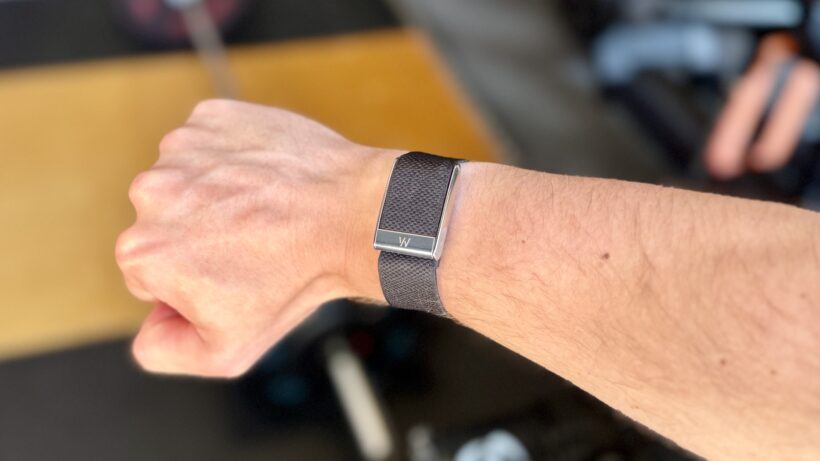Here's what we've learned after testing the feature for over two years.
Once upon a time, tracking your strength workouts and receiving the proper credit for your big lifts in the gym was virtually impossible. That all changed with Whoop Strength Trainer.
Since the feature was added to the Whoop experience in April 2023, I’ve been using it to mix up my routine, spot trends in workout intensity, and gain more accurate insights into my Strain.
As I’ve touched on in our full round-up of the best wearables for strength training, Whoop’s platform is far from perfect. For one, it hasn’t been meaningfully updated in over two years. However, it is the only real way to do so in wearables.
So, with that in mind, this guide is where I’ll hone in on why the Strength Trainer is a must-use for Whoop subscribers, some tricks to employ during tracking, and a few missing features you’ll want to keep in mind.
Why you should use the Whoop Strength Trainer

The primary reason to use Strength Trainer is for the more accurate Strain calculation.
We would always recommend using Strength Trainer over tagging a workout as ‘Weightlifting’ (or a similar term) for this reason alone.
Otherwise, as shown above, you can get some pretty skewed results. On the left, we performed a workout and tagged it under Weightlifting. It was a longer, more intense (in terms of HR) session than our Strength Trainer workout on the right, yet the Strain score is lower.
This has repercussions for the usefulness of the Whoop platform.
Suppose Whoop thinks you had a day that included a 6-9 Strain when, in reality, you pushed yourself to a decent level and your load felt more towards the 12-15 range.
In that case, Whoop’s idea of how you’re physiologically responding to load won’t be as accurate as it could be.
Why is Strain more accurate in the Strength Trainer?
Heart rate plays a major part in workouts, which is why cardiovascular efforts, such as running, generally garner a higher Strain score than weightlifting or CrossFit workouts.
As we know, though, it’s not just our hearts that work hard during weightlifting exercises. Muscles need time to recover, and Strength Trainer instead calculates Strain by assessing your exercises, sets, reps, and weight.
It also includes biometric information, as well as data from your Whoop’s gyroscope and accelerometer.
Five tips for using the Whoop Strength Trainer feature

After using Strength Trainer for nearly a year, we’ve picked up several valuable insights.
Things have changed slightly since the feature was first rolled out, but the core idea of beginning and ending each set with a tap on your phone remains.
There are a few basics you’ll get to know pretty quickly, such as adapting your custom workout in the order you typically walk around the gym, or combining exercises into supersets – but here are five tips for using Strength Trainer that may otherwise elude you.
1. Workout ‘Intensity’ is partly based on location
Before you begin a workout, the Strength Trainer will ask whether your tracker is positioned on your left or right wrist. There are no other options because the ‘Intensity’ percentage that appears after your workout is completed is partly based on accelerometer and gyroscope data.
We wear our Whoop with a bicep strap and haven’t noticed any issues with tracking. However, the company indicates that the Strength Trainer isn’t compatible when you’re wearing Whoop Body clothing, for example.
If this is a metric you care about following, ensure you wear your Whoop on the wrist.
2. Select the correct unit of measurement
We’ve alluded to this already in our Whoop tips and tricks guide, but we’ll repeat it here because we suspect (and hope) we’re not the only ones to have spent a considerable amount of bandwidth converting pounds to kilograms, or vice versa.
To change your unit of measurement, as shown below, open the Whoop and go to More > My Account > Profile Information > Units. Simples.

3. Use Whoop Coach to compare your effort
We’ve found Whoop Coach’s usefulness to be fairly mixed since its launch in 2023, which is to be expected given that the feature is still in beta.
However, it turns out that the AI can provide you with some interesting insights into how your effort compares to previous workouts.
Simply go to a specific workout once your Strain has been calculated, then ask Whoop Coach something like, ‘Compare this effort to my other workouts’.
If you have custom workouts set up, like we do, Whoop Coach will break down some key stats comparing your last workout to your averages from others. Pretty neat.
4. Share workouts the easy way
This will only work if you’ve a friend who is also a Whoop subscriber, which is a bit annoying, but you can now easily share workouts you’ve created using a QR code.
From the ‘My Workouts’ section of the app, simply tap the three-dot icon on your routine of choice and select ‘Share workout via QR’.
A code will then appear that your friend can scan in person, meaning they don’t have to spend time creating the same workout. Alternatively, you can also share via a link in a text or WhatsApp message.

5. Add in your cardio intervals
If you enjoy punishing yourself with cardio finishers in supersets or other HIIT-related exercises, you’ll be pleased to know that you can factor these into custom workouts.
Whoop supports adding Assault Bike, elliptical, running, rowing, spin, and Stairmaster sets, so you’re very well catered for in this department.
What the Whoop Strength Trainer doesn’t do
While Whoop 5.0/MG is our top recommendation for those seeking a wearable for tracking weightlifting, several key features are still missing from the Strength Trainer.
Below is our current wish list, along with key considerations for those considering a Whoop subscription based on this feature.
It doesn’t track your lifting progress
Our number one complaint with Strength Trainer is that progress isn’t shown over time.
All your reps, sets, and exercises may be tracked, but this data is currently only used to calculate Strain.
It seems like a no-brainer that your history of performing an exercise should be displayed in a long list, allowing you to dive in and compare your progress. But, for now, no dice.
Trends aren’t highlighted over time
On a similar note, your lifting trends and the effect of your workouts aren’t highlighted.
For example, Whoop could theoretically tell you whether your workouts are more intense or your lifts are typically heavier in the morning or afternoon.
It could also factor in how your physiological markers, or recovery score, tend to affect your workouts. Right now, though, there’s not a lot of cross-pollination in Strength Trainer.

Progressions aren’t automatically provided
Progressive overload is one of the core principles of strength training; however, Whoop’s Strength Trainer leaves you to increase or decrease weight based on your feelings.
In some respects, this approach works and could teach you to listen to your body and gauge the correct weight for a given day. However, given that this is a difficult skill to master, some nudges from Whoop wouldn’t go amiss.
Perhaps Strength Trainer uses existing data to notice how your reps have been steadily increasing when lifting the same weight in an exercise for a few weeks, for example.
Blind spots aren’t accounted for
Building custom workouts is quite laborious in its current form, and you need to be relatively experienced to avoid any blind spots.
Personally, I don’t tend to mix up my Push-Pull-Legs routine too much since I’m often in maintenance phases—and therefore only really swapping in exercises every month or two—but I’d still appreciate a way for Whoop to take some of the load in this section of Strength Trainer.
It would be great to see a heat map of each muscle I would hit in a custom workout, and potentially even suggestions on exercises I could incorporate or swap in for maximum efficiency.
There are no workout plans to follow
Whoop has done a nice job catering to beginners and the time-poor with its preloaded plans, but they’re also quite limited.
While there’s a fun novelty in jumping into Rory McIlroy’s strength workout or Virgil Van Dijk’s explosive gym session, these tend to be relatively short, and you still eventually have to try to incorporate them into a wider plan.
We would love to see Whoop develop this part of Strength Trainer to include multi-week workout plans based on your athletic goals, time, and previous experience, similar to what you would find on exercise platforms like FIIT.




